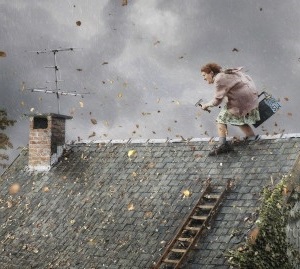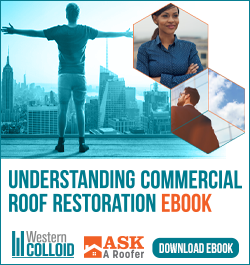How to Protect Your Home from Rainy Season

Even if you don’t get a lot of rain or a sustained period of rainy days, it's important to watch for damage from water.
In some parts of the country, the rainy season can last several months in a row and maybe returning later for more. In other areas, the rainy season may just refer to a string of rainy days that last long enough to do some damage and then move along.
Even if you don’t get a lot of rain or a sustained period of rainy days, it is important to watch for damage from water, especially in the basement of your home. Basement flooding is one of the most common problems that homeowners report and can often be one of the more expensive repairs, especially if the problem is not addressed quickly enough.
Where is this water coming from?
The first step in protecting your home is to know how, when, and where dangers can strike. In this case, that means determining when water damage is most likely and how the water is getting into the house before you can take the steps to control it.
In most cases, water comes from one of three natural sources: condensation, runoff, and groundwater swelling. Additional causes are rarer and usually involve things like broken pipes. Once you figure out the source of the water, you can take the proper steps to control it, prevent it from coming into the house again, and repair any damage that may have occurred.
Condensation
Condensation happens the same way no matter where or how large of an area is impacted. It is what happens when moist, warm air meets a cooler surface, for instance, when warm, humid air in your home meets the cooler walls of the basement. This can be especially true if the walls are concrete, which tends to stay a bit cooler than other types of materials.
It can be difficult to tell if the moisture is from condensation or a small leak, but there is a fairly simple and very inexpensive test you can do to tell. Tape a piece of plastic wrap that is larger than the damp spot over the wall. If moisture collects on the inside of the plastic wrap, the problem is a leak. If water collects on the outside of the plastic wrap, it is condensation. You can do this in several places in the basement. You might be surprised to find that you have both problems, sometimes in the same area.
Prevention tips:
- If condensation is the problem, simply airing the basement out as often as possible might significantly improve things.
- Using a dehumidifier may also be necessary and maybe all that you need to do.
Runoff
Runoff is exactly what it sounds like: water that is running off from roofs, trees, and higher ground, including water from melting snow and other sources. Runoff also occurs when drainage gutters are clogged, improperly installed, or routed incorrectly.
Prevention tips:
- Your first defense against water anywhere in your home is your roof. Check the condition of the roof, repair any damage, and replace it if it is beyond its useful age.
- Clean out, repair, and replace the gutters. Clogged gutters can cause water to spill out before hitting the downspout, which means that water is not where it needs to be. Make sure that the downspout is in place and properly located so that water runs away from the home as far as possible.
- Check windows, especially those that are in the basement, for any signs of leaking. Wooden window frames may swell and then contract, which can lead to gaps that allow water to run down walls.
- Make sure that your yard is lower than the house. If the yard sits higher, water will be more likely to run under the house and then up through the floors during times of heavy rains.
Groundwater swelling
The water table refers to how much water the ground can hold. At the ground level, water seeps down into the soil and between rocks and crevices and is absorbed into deeper pockets. When rains come too frequently or rain falls too fast, the water cannot be absorbed deeply or quickly enough, and oversaturation occurs. This is also called groundwater swelling. The collected water will pool and run back wherever it can. You may have this issue if your basement tends to flood or get damp after heavy storms or remains damp after prolonged but not intense rainfalls.
Prevention tips:
- Check the foundation for any signs of cracks, holes, gaps, and other potential leaking areas.
- While you are checking the foundation, look for any signs of pooling water, and then try to find out where it is coming from.
- Waterproof the basement as much as possible. You might start by using a special sealer that is simply painted onto the floors and walls. In some cases, this may solve the entire problem. In more serious cases, additional steps may be needed.
- Install a sump pump if there are several inches of water in the basement whenever it rains too much. Sump pump installation can cost approximately $1,100. Make sure that you compare the different types of sump pumps and choose the right one for your situation and budget.
- You can install a barrier to prevent water from coming into the basement itself; however, you will still need to deal with the collected water.
- Water can be very damaging, so it is important to take as many preventative steps as possible. Prevention is typically thousands of dollars cheaper than paying for repairs after the damage has been done.
If you have done all of the prevention steps, including sealants, dehumidifiers, and more, and are still having problems, you may need to seek out a professional for advice and service. This is especially true if there are any signs of foundation damage, such as shifting, wall cracks that are notably larger or suddenly appear, doors that no longer open and shut properly, and visible tilting of rooms.
Have a question? AskARoofer.
Find your local roofing contractor in the RoofersCoffeeShop® Contractor Directory.








Comments
Leave a Reply
Have an account? Login to leave a comment!
Sign In